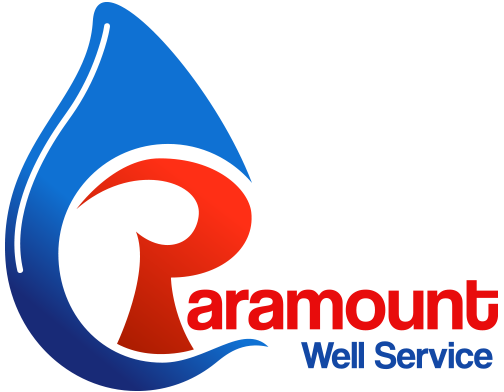Ever wondered what goes into the process of securing a reliable water source for your property? The journey of well drilling is a process that ensures your access to clean and consistent water. For many, this journey is often filled with uncertainties, especially if you’re unfamiliar with the process.
As a professional well drilling company, Paramount Well Service’s goal is to help you understand the steps and stages involved and what to expect so we can alleviate concerns and provide a clearer picture of your well drilling service. Here’s what you can expect and what you need to know before, during, and after we drill wells for your home or business.
Early Stages of the Process
Before any drilling begins, the first critical step is choosing the right site. This involves a thorough hydrogeological survey to identify potential groundwater sources. The survey takes into account factors such as the depth and quality of water, soil type, and geological formations. The goal is to find a location that ensures a sustainable yield of clean, potable water while minimizing potential environmental risks.
Once the site has been selected, the next stage is the design and planning of the well. This includes determining the depth, diameter, and type of well to be drilled. The design also considers the type of drilling method to be used, which depends on the geological conditions of the site. Additionally, the well design includes the casing and screen materials, which are chosen based on the chemical characteristics of the water and soil.
Before the drilling can commence, we secure all necessary permissions and permits from local and state regulatory bodies. It’s a crucial step in ensuring the sustainability and legality of the well.
What to Expect During the Well Drilling
The well-drilling process is a fascinating blend of science, engineering, and practical problem-solving. Once the planning stages are complete, it’s time to shift gears into the actual drilling.
Stage 1: Drilling the Borehole
The first step in the drilling process is creating the borehole. This involves using a specialized drilling rig to penetrate the earth’s surface and reach the water-bearing strata, known as the aquifer.
Stage 2: Installing the Casing
Once the desired depth has been reached, a casing is installed. This casing stabilizes the well walls and prevents contamination from surface runoff or shallow groundwater sources.
Stage 3: Adding the Well Screen
Following the casing installation, a well screen is inserted at the bottom section of the well. This screen allows water from the surrounding aquifer to flow into the well while keeping out sediment and particles that could clog the well or degrade the water quality.
Stage 4: Developing the Well
Well development is the next step. It involves pumping water out of the well to remove fine particles and sediments that may have entered during drilling. This process cleans the well and increases its yield by improving the flow of water from the aquifer into the well.
Post-Well Drilling
Once your well-drilling process is complete, there are several key things you can expect. The newly drilled well will undergo a development phase to remove the fine particles and drilling fluid, which helps increase the water flow into the well. The well will be tested for yield, which determines how much water the well can provide. After the yield testing, the well will be disinfected to eliminate bacteria that may have entered during the drilling process. Following this, water quality testing is carried out to make sure the water is safe for use.
Ready for Your Well-Drilling? Contact Paramount Well Service
Keep in mind that each property comes with its unique challenges and requirements, which is why a one-size-fits-all approach won’t work. At Paramount Well Service, we offer well-drilling services to match your specific needs, guaranteeing that you receive a well-drilling solution that is both effective and sustainable. Contact us today to learn more about our commercial and residential services and begin your journey toward efficient and dependable water access.




